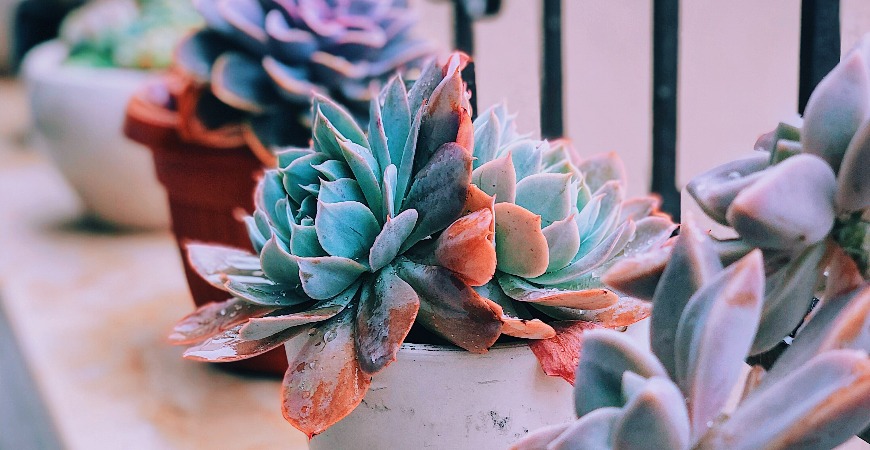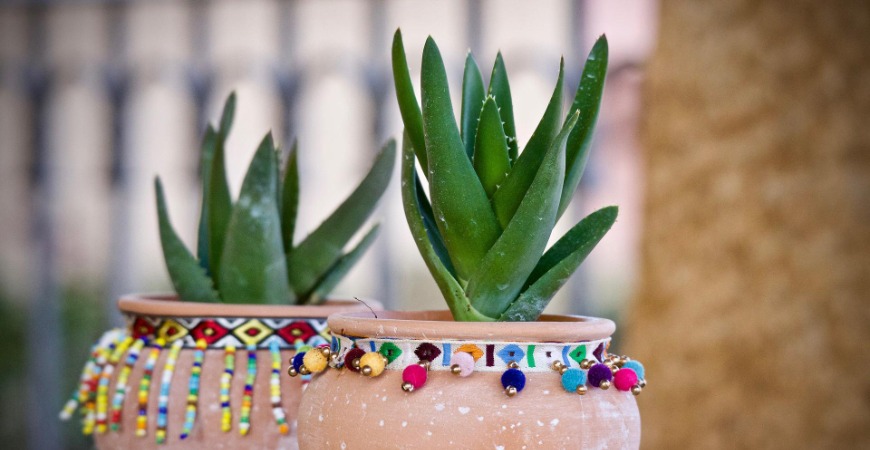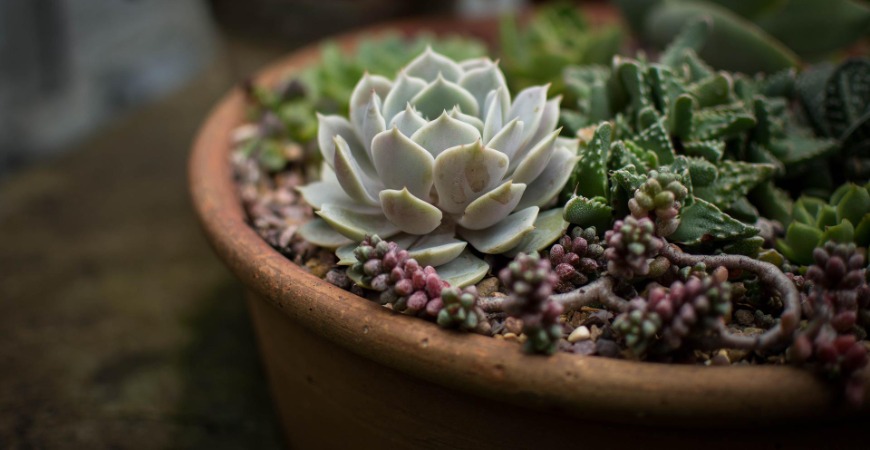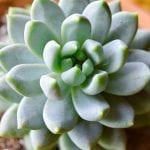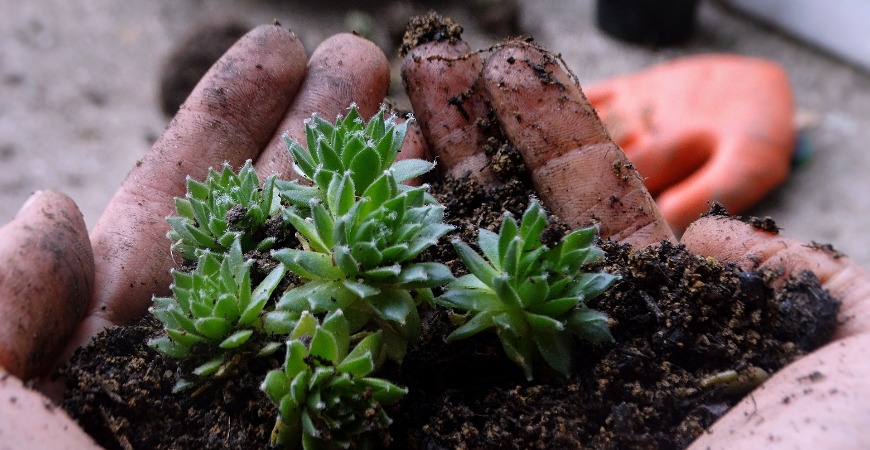
How to Move Your Succulents Outside for Summer
Like a grown child with a philosophy degree and a basement apartment in their parent’s home, succulents sometimes have a reputation for only thriving indoors. But, also like that grown child, there comes a time when the plant parent needs to take a deep breath and realize that growing independence outside the home is the best path forward.
Of course, even if you’re ready to take that step, you may still not know how to care for succulents outside. Yes, there are support groups, but all you need is some basic information about the transitioning process to help your plants succeed and start paying for their own cell phone plan.
Can Succulents Live Outside in Summer?
Succulents can live and thrive outside. However, in regions with colder temperatures, you may need to bring them inside once temperatures drop.
In fact, the temperature is one of the biggest concerns when moving your plants into a garden. So if you’re planning on planting them permanently in your garden, you’ll need to wait until there’s no chance of the temperatures dropping below 40 degrees Fahrenheit.
If you are using a planter, you gain some additional flexibility. For instance, you can leave your succulents out during the day and then bring them back inside at night should temperatures plunge.
Even if you are planning to eventually plant your succulents in your garden, a planter can help with the transitional phase. These plants don’t always do well with tons of direct sunlight, especially if there’s a sudden or drastic change in the amount of sun they get.
So, you can use planters or pots to help the succulents adjust. Begin by leaving them outside in the sun for no more than 5 hours a day and gradually increase the amount of time they’re left outside until you might as well keep them there 24/7 anyway.
Should You Plant Succulents in the Ground or a Planter?
You can plant your succulents in either the ground or a planter. As mentioned above, though, even if you plan to transition your plants to your garden, pots can help the succulents adjust until they’re ready for permanent planting.
An ideal spot for your succulents will be one with well-draining soil. Succulent-specific soil mixes can also help your plants adjust to outdoor life.
If you have a succulent variety that likes to sprawl, such as hens or chicks, try to give them enough space to thrive.
When choosing a planter for your succulents, it’s best to find one with draining holes in the bottom. Many gardeners choose terra cotta pots to help keep extreme moisture away from the plants’ roots.
Pots also have the advantage of mobility. Some succulents prefer to be directly in the sun, while others prefer some amount of shade. Planters allow you to adjust the position of your succulents within your garden or even bring them inside if there’s a late frost.
How Do You Care for Succulents Outside?
While succulents are known for their durability, they do require some care to ensure a long life. For instance, you should try to use succulent-specific soil whenever moving your plants to your outdoor garden or a new planter.
Additionally, watering succulents in summer requires a light touch. It’s generally better for succulents to go thirsty than over-water them.
This preference for a dryer outdoor environment is due to their delicate root systems. When exposed to too much water, a succulent can experience root rot.
If you live in the desert or another typically arid area, you likely won’t have to worry too much about this issue. However, if you live in the Pacific Northwest or another region familiar with rainstorms, plan to keep your succulent in a planter or shield it from the extra water.
What Do You Need to Protect Your Succulents From?
Besides overwatering, there are a few other potential threats that could harm your succulents outside:
- Sun: If the leaves of your succulents are starting to turn brown or discolored, they’re likely getting sunburnt. Using a shade cloth can help protect your plants if you’re unable to move them.
- Pests: Squirrels, mealybugs, and slugs are all known succulent connoisseurs. Some gardeners swear by cayenne pepper to keep critters away, while cornmeal may help keep slugs away.
- Temperature: While some succulents may go dormant in cold temperatures, others will simply die. Again, pots can help you move your succulents inside should there be an unexpected drop in temperatures.
Outside of these pretty common issues, though, succulents should be able to survive almost anything. That makes them an ideal outdoor plant for gardening novices and experts alike.
Summer Vs. Winter Dormant Succulents: What’s the Difference?
We’ve mostly talked about succulents that thrive in the summer in this piece. However, some succulents go dormant in the hotter months.
Dormancy in plants is similar to hibernation in animals. When a plant goes dormant, its metabolism drops significantly to minimize energy usage until the weather changes to something more conducive to growth.
When it comes to succulents, there are both summer and winter dormant varieties. Summer dormant succulents grow best in the winter, and winter dormant succulents prefer the summer.
Some common summer dormant succulents include:
- Aloe
- Cotyledon
- Crassula
- Haworthia
- Pachyveria
- Sedum
- Senecio
Popular winter dormant succulents include:
- Agave
- Echeveria
- Lithops
- Sempervivum
- Tillandsia
Dormant succulents don’t look entirely different from dying succulents, so it’s essential to know when your plant is merely resting or when it’s on its way past the rainbow bridge.
Generally, a dormant succulent will still show some signs of life beneath the surface. To test for dormancy, many gardeners will snap a small branch off the succulent to see if it still looks green inside.
Roots are another way to determine whether the succulent is merely resting. The roots should look healthy and not dry, rotten, or shriveled, even in dormancy.
During dormancy, succulents don’t require much care. However, if the leaves begin to look dry, you can give the plant some water. Otherwise, you can leave the succulent as-is until it’s growing season again.
Where Can You Find More Advice on Succulent Care?
Our blog has plenty of articles on how to care for a variety of succulents. Check it out to make sure that you’re helping your plants thrive in any environment.

